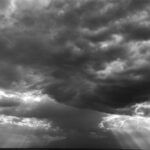Are you perplexed by the tiny numbers marked on your camera lens? Do you wonder what they are or what they do? They’re called f-stops and they refer to the opening of the lens, known as the aperture, which allows light to enter the camera. Each number indicates a measurement of the size of the opening. In this quick video, Taran from Techquickie explains everything you need to know about aperture as quickly as possible:
What Do the F-Numbers Mean?
The f-stop number is a focal ratio that indicates the size of the hole in your lens. The wider the aperture, the more light that can make it through the barrel of the lens and reach the sensor.

The numbers around your lens (22, 16, 11, 8, 5.6, etc.) relate to aperture.
The aperture controls how much light is actually getting through to your sensor. If you move from f/11 to f/8 to f/5.6 to f/4, and so on, you are doubling the amount of light that is getting to the sensor with each change.

Aperture settings are not intuitive. Larger numbers refer to smaller apertures.
If you slide down the scale, from f/4 to f/11 for example, each subsequent number halves the amount of light allowed into the camera. For beginners, that scale may not seem logical. An aperture set at f/4 is larger in size than an aperture of f/5.6.
Generally, if you have a darker scene you need a wider aperture (to allow more light to enter the camera) and if you have a brighter scene you need to use a smaller aperture (you don’t need too much light in when it is already bright).
Aperture and Depth of Field
Another aspect to wider and smaller aperture that affects your compositions is depth of field (DoF). Very quickly, depth of field indicates the extent of the image that is acceptably sharp. With wider apertures, less of the image is going to be in focus (shallow DoF). The opposite is true with smaller apertures (deep DoF). Both have creative applications, such as when you want to isolate the subject of your photos by blurring the background or when you want to have everything in focus.

Wider apertures create shallow depth of field.
With wider apertures, however, you need to take care so that the image is not washed out. When you allow in more light using the aperture, your image will be over-exposed. To compensate, you can dial down the ISO or increase the shutter speed. If you’re using aperture priority mode, this compensation is automatically taken care of by the camera.
Just like anything else in photography, take care so that you don’t overdo shallow depth of field. If you use an aperture that’s too wide, only a sliver of your image will be in focus; the subject may not be distinguishable at all.
So there you have it. A quick and simple explanation of aperture and f-stops.
Like This Article?
Don't Miss The Next One!
Join over 100,000 photographers of all experience levels who receive our free photography tips and articles to stay current:






Leave a Reply